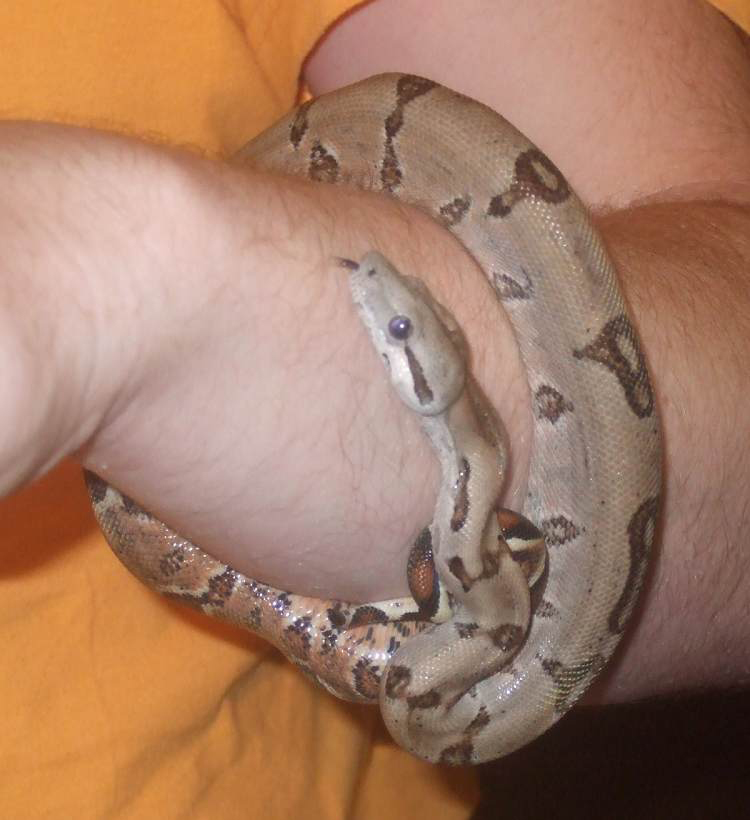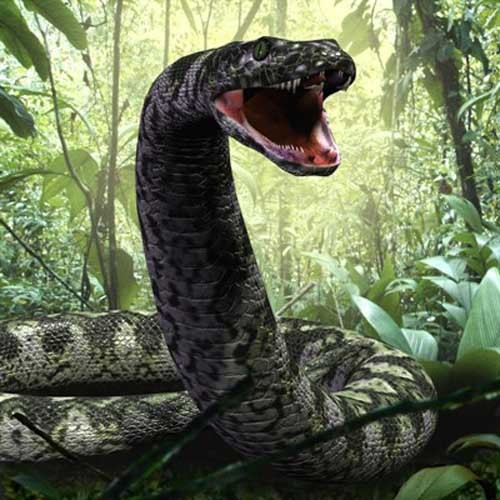

Like living boa constrictors, Titanoboa would have been an ambush predator, attacking its prey by surprise and the coiling around them. The prey of Titanoboa likely consisted of large lungfish, small birds and mammals, crocodiles, turtles and other snakes. Titanoboa lived in a neotropical forest where it coexisted with other larger reptiles like the giant fresh water turtle Carbonemys and the dryosaurid crocodile, Anthracosuchus. But a once thought to be extinct fifty-foot boa constrictor is out hungry. Based on the size variation seen in modern snakes like anacondas and reticulated pythons and assuming Titanoboa was the same then a snake reaching a length of 20 meters or more is not out of the question though at the point purely speculative. A group of college students head into the rainforest to look for cave drawings. Titanoboa was originally discovered in 2009 in the Cerrejón Formation by coal miners, by comparing the vertebrae of Titanoboa to that of living constrictor snakes like boas and pythons researchers estimated that Titanoboa could have reached sizes of between 12.8 and 14.3 meters and would have weighed around 1,135 kg. doi: 10.1016/j.geobios.2014.03.004.Titanoboa cerrejonensis was an extinct species of giant boa constrictor belonging to the family Boidae that lived in what is now Columbia during the middle to late Paleocene epoch around 60 to 58 million years ago. "First report of the giant snake Gigantophis (Madtsoiidae) from the Paleocene of Pakistan: Paleobiogeographic implications".

Marivaux, Laurent Merle, Didier Solangi, Sarfraz H. ^ Rage, Jean-Claude Métais, Grégoire Bartolini, Annachiara Brohi, Imdad A."II.-Preliminary Note on some Recently Discovered Extinct Vertebrates from Egypt. "The osteology of the giant snake Gigantophis garstini from the upper Eocene of North Africa and its bearing on the phylogenetic relationships and biogeography of Madtsoiidae" (PDF). "They might be giants: morphometric methods for reconstructing body size in the world's largest snakes". "Titanic ancient snake was as long as Tyrannosaurus". Gigantophis garstini is classified as a member of the extinct family Madtsoiidae. In 2013, vertebrae collected in Pakistan were found to be similar to Gigantophis vertebrae collected in Egypt, but their exact affinities are uncertain. Its discovery was published in 1901 by paleontologist Charles William Andrews, who described it, estimated its length to be about 30 feet, and named it garstini in honor of Sir William Garstin, KCMG, the Under Secretary of State for Public Works in Egypt.

The species is known only from a small number of fossils, mostly vertebrae. Increasingly, media and other reports of sightings or encounters.

Several are known or suspected to be breeding and appear to be spreading northward. Later estimates, based on allometric equations scaled from the articular processes of tail vertebrae referred to Gigantophis garstini, revised the length of Gigantophis garstini to 6.9 ± 0.3 metres (22.64 ± 0.98 ft). Since the mid-1990s, several species of non-native, giant constrictor snakes, such as Burmese pythons and boa constrictors, have surfaced in localities throughout southern Florida. If 10.7 m (35.1 ft), it would have been more than 10% longer than its largest living relatives. Jason Head, of the Smithsonian Institution in Washington, DC, has compared fossil Gigantophis garstini vertebrae to those of the largest modern snakes, and concluded that the extinct snake could grow from 9.3 to 10.7 m (30.5 to 35.1 ft) in length. It lived about 40 million years ago during the Eocene epoch of the Paleogene Period, in the Paratethys Sea, within the northern Sahara, where Egypt and Algeria are now located.ĭescription Size A diagram showing the estimated lengths of Gigantophis garstini compared to other large snakes. Males breed every year, but females may not. Once seasonal rains have subsided and give way to the dry season, male boa constrictors embark on the task of seeking out a mate. The Common Boa (Boa constrictor imperator) is classed as GENUS:Boa SPECIES. Boa constrictors live in areas that are generally subject to wet and dry seasons. The constrictor part of the scientific name refers to the species. Before the Paleocene constrictor genus Titanoboa was described from Colombia in 2009, Gigantophis garstini was regarded as the largest snake ever recorded. Boa Constrictors belong to the Boa genus. Gigantophis is an extinct genus represented by its sole member Gigantophis garstini, a giant snake.


 0 kommentar(er)
0 kommentar(er)
